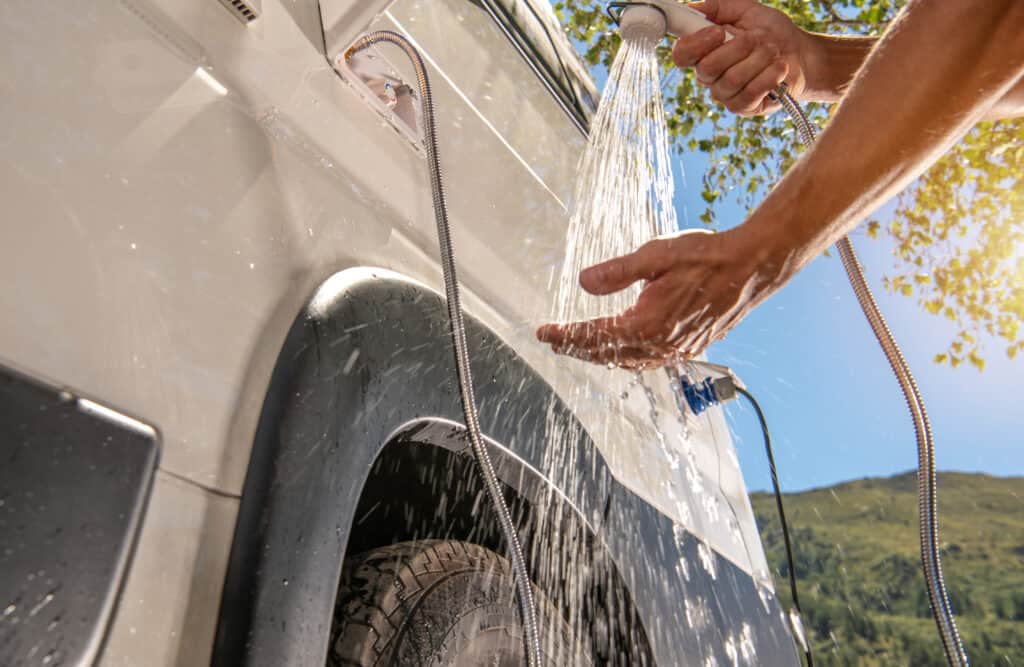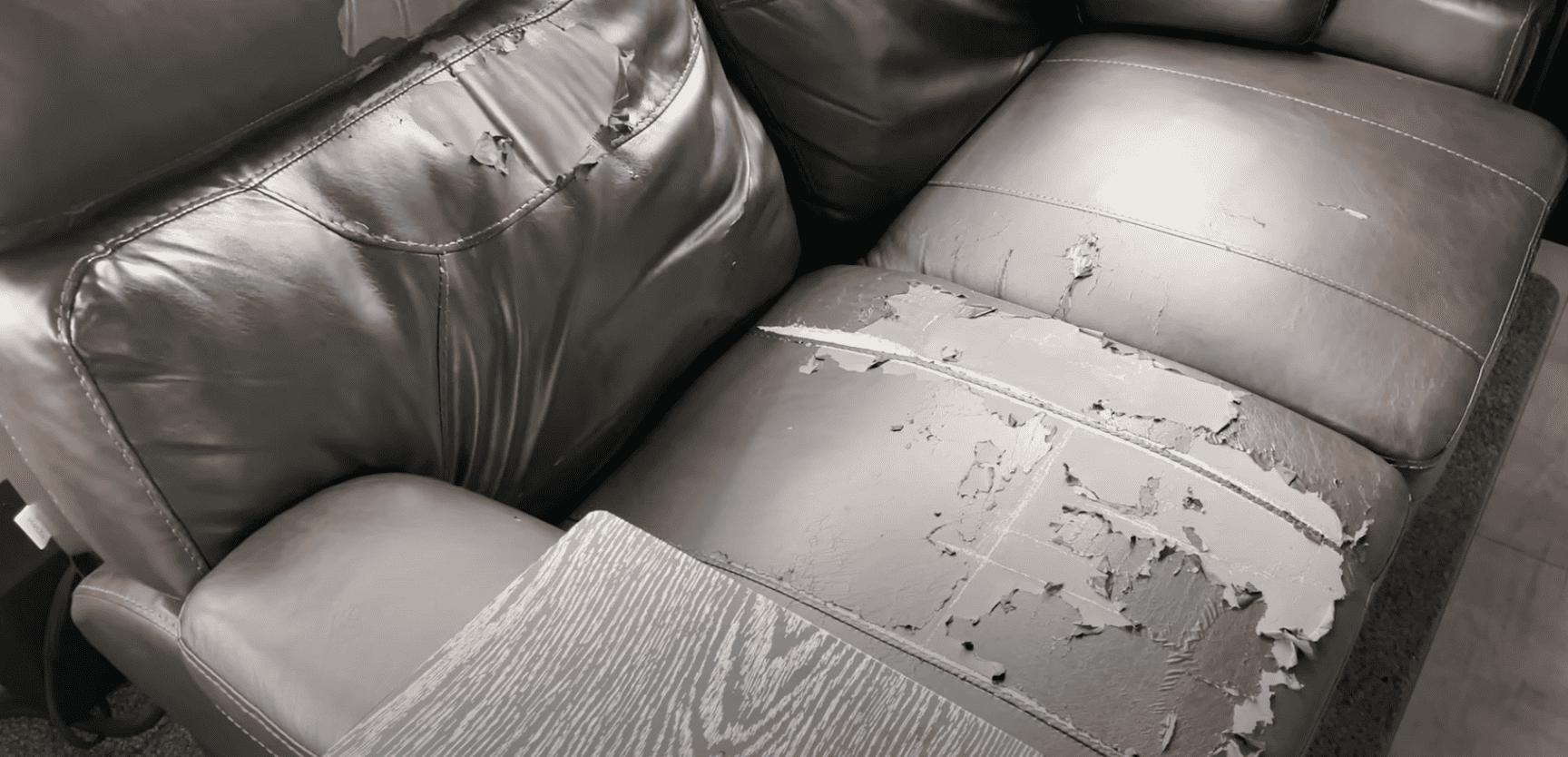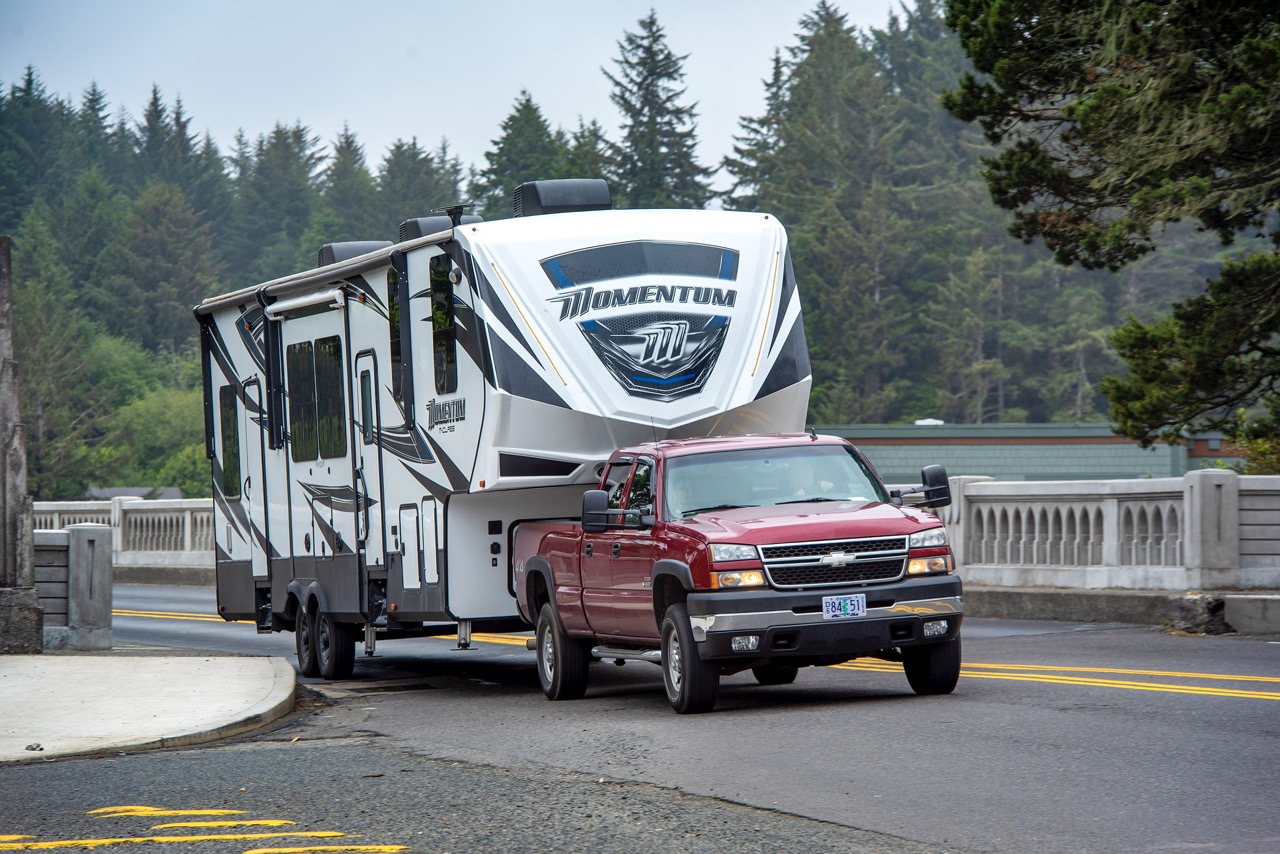
When your drinking water tastes bad, camping isn’t good either. These tips to clean and sanitize RV water tanks can make your next trip a great one.
Why RV Water Tastes and Smells Bad
Does your RV water smell like rotten eggs? The problem is likely an algae bloom inside the tank. This is what causes bad taste and smelly RV water. Some people think algae is a nuisance, not a health concern. But harmful algae blooms in the wild can harm pets and people. So just think what algae can do to your drinking water!
My family recently learned about the importance of knowing how to clean and sanitize RV tanks. We were in a hurry to be off on our next camping trip. I wanted to wait until after we came back to clean the tanks. But I thought I’d look up whether somebody might get sick. I found the Center for Disease Control lists a lot of health problems that can happen to people and pets. Abdominal pain, headache, vomiting, gastrointestinal problems, neurological, liver, and kidney damage are just a few. Yikes!
Algae grows in RV water tanks
Sunlight causes most algae growth outdoors. RV water tanks are not outside, and usually in dark places. But even if the tanks lack access to sunlight, algae can grow in stagnant water inside your RV tanks. RV drinking water tastes bad as a result. Expect to clean and sanitize RV water tanks regularly if you don’t empty them after each drip.
I don’t want you to be afraid of drinking RV water. Just don’t wait, as I did, before cleaning and sanitizing your RV water tanks. Buying bottled water for drinking and cooking won’t solve the problem. It’s not just bad for the planet. Inhaling water mist with algae can cause problems, like when you use RV water for showering.

How to Clean and Sanitize RV Water Tanks
Algae can grow in RV water tanks before water smells or tastes funny. My tanks were already past that point. A small patch of green was already growing in one corner of the tank. I had no choice but to clean the tanks before our trip. RV fresh water tank cleaning is necessary to remove algae. Sanitizing RV tanks after prevents algae from growing in the future.
Your RV Water Tank Gets Cleaned First
If algae patches are visible on the inside surface of the tank, disinfect it before sanitizing. Do this with a long-handled soft-bristled brush or soft sponge. That’s if you can reach the area. Do not use steel brushes. The bristles can scratch the interior of the tank.
Now You’ll Sanitize the RV Water Tank
- Add 3/4 cup of bleach for every 15 gallons of water. Dilute the bleach with water, first.
- Allow bleach water to soak for at least two hours. Then flush water lines to the shower and sinks.
- Fill with clean water. Flush again to remove the bleach. Repeat until bleach smell is gone.
- Routinely clean and sanitize RV water tanks to prevent algae regrowth
Can Vinegar Or Red Cider Vinegar Be Used to Disinfect and Sanitize Clean Water Tanks from Algae?
Some people believe that vinegar is great for cleaning bacteria from water tanks. But vinegar is primarily used to remove calcium deposits from hot water heaters. It is not for cleaning and sanitizing RV water tanks. And it won’t remove algae in RV water tanks either. As for apple cider vinegar, it’s recently gained a lot of publicity for losing weight, reducing diabetes, and lowering cholesterol. But it will not kill bacteria or algae in RV water tanks either.
Water Lines and Hoses Need Sanitizing Too
Don’t forget to disinfect your RV water hose too. I soak my hoses in a bucket of bleach diluted with water for a couple hours. Then I rinse them until bleach odor is gone. Remember not to use pure bleach only, but always dilute with water.
Always keep the ends of the hoses from touching anything that may be dirty or contaminated. Just keep the ends covered with caps. Or, link the ends together.
What About Sanitizing RV Hot Water Heaters?
Algae can survive in temperatures up to 140 degrees. The hot water heater, although it has no sunlight, can still have algae inside. In addition, Legionella bacteria also can grow in hot water heaters. This bacteria causes Legionnaire’s disease. It’s a form of pneumonia, and the bacteria can survive at 122 degrees Fahrenheit (50 °C).
So yes, sanitizing RV hot water heaters is smart. Do this every spring before going camping. Or, if an odor is noticeable when you run warm water.
How to sanitize RV hot water heaters
- Make sure your RV hot water heater is off. Never empty a hot water tank under pressure or while hot.
- Open the petcock. This is usually located outside on the bottom of the hot water heater. To promote draining, open the plug at the top.
- Once the water has drained, close the plug and the petcock.
- Add ¾ cup of bleach or algaecide as directed to the water in the clean water tank. Allow the hot water heater to refill.
- Soak for a couple of hours. Then run the water out and refill. Continue the process until any bleach smell in drinking water disappears.
How to Test for Algae in RV Water Tanks
Many RV products let you check for algae even before it begins to show up as the familiar green color. These simple steps to clean and sanitize RV water tanks should prevent algae regrowth. But if you feel more comfortable with testing your water, try an easy, affordable algae test. Walmart’s Insta Test 3 Plus sells for $8.95. This product has test strips to indicate algae in the water.
Beach is an inexpensive solution to clean and sanitize RV water tanks. But it won’t let you know if algae is present. Try an algaecide from your RV supply store instead. They contain copper, which works by penetrating the cells of algae and preventing growth.
Follow the directions of the algaecide carefully. It usually takes several drops to treat several gallons of water. Water is safe for drinking within 30 minutes to 24 hours after applying the drops. This depends on the amount of water being treated. Copper algaecides are safe for water tanks, but can be corrosive to clothing such as cotton if spilled.
And if you’re worried about copper in your RV water tank, don’t be. Trace copper is a natural part of people’s diets. Some campers prefer the copper algaecides to bleach because copper is natural. But copper algaecides are used in many drinking systems throughout the world.
Water Filters Help Reduce Algae and Bacteria Growth
Inline water filters can reduce bacteria and algae. But products do not remove all of the algae and bacteria. However, even a reduction of bacteria and algae is helpful.
There are two types of water filters: inline water filters and canister filters. The canister filters are recommended for full-time RVers.
Pay attention to the RV water filter specifications. Some do not specify if they filter calcium or bacteria. Inline units that combine carbon filtration and sediment removal are the best water filter system for RVs. They are portable and fit onto your water hose.
Canister filtration includes systems that feature one, two, or three canisters. They get fastened to your RV plumbing system. Carbon filters can have a KDF, (Kinetic Degradation Fluxion), added. This removes algae, bacteria, and other impurities such as lead, mercury, iron, and chlorine. Silver nitrate is also used to prevent bacteria growth in the filter itself.
Even the best RV water filters need periodic replacement. Timing varies, so check the instructions for the recommended length of use.
Conclusion
Now that you know how to clean and sanitize RV water tanks, there’s no excuse to have smelly RV water. Clean RV water is safe for drinking and bathing. Stay on top of algae with algaecide testing products and you can enjoy your next camping trip to the fullest.




Most articles recommend 1/4 cup of bleach per 15 galloNSA of freshwater. You are recommending 3/4 cup per 15 gallons? Seems high.
Your information is so helpful. I had a bad surprise when I decided to flush my fresh water tank. As a newbie who bought a used camper (from a dealer), I received no maintenance instructions. I’m concerned the black algae may never be completely gone. I have a 2018 NuCamp T@b 320s in excellent condition…except for this surprise.
thanks so very much for the great article & instructions on water tank maintenance
and cleaning the water system